|
Set in the Spanish Golden Age, during a time of high‑stakes political intrigue and glittering wealth, The Familiar follows Luzia, a servant in the household of an impoverished Spanish nobleman who reveals a talent for little miracles. Her social‑climbing mistress demands Luzia use her gifts to win over Madrid’s most powerful players but what begins as simple amusement takes a dangerous turn. Luzia will need to use every bit of her wit and will to survive—even the help of Guillén Santángel, an immortal familiar whose own secrets could prove deadly for them both. The Familiar by Leigh Bardugo is on sale now. |
 |
Since the 1980s, -punk has been used as a suffix describing several fiction subgenres. These are sometimes called “punk punk” because there are so many of them.
Why punk? Punk refers to defying conventions. Though the Sex Pistols once sang, “No future,” punk music almost always has an element of hope. Punk means rebellion, anti-authority, and potential for social change. Punk often upends expectations of sci-fi or fiction in general. Characters may fight dystopian governments or technologies.
Punk subgenres show how blurry the lines between genre fiction and “mainstream, literary” fiction can be. They also frequently overlap with one another. The Underground Railroad by Colson Whitehead is literary, speculative, historical fiction with steampunk elements that makes the Underground Railroad a literal steam train. Despite the title Clockwork Angel, the YA fantasy Infernal Devices series by Cassandra Clare is set in Victorian London, making it more steampunk than clockpunk.
Here are a few books that exemplify or influenced these subgenres, plus links to even more examples.
Cyberpunk
Bruce Bethke created the term cyberpunk in 1982 as the title of his sci-fi story. Britannica defines this subgenre as “characterized by countercultural antiheroes trapped in a dehumanized, high-tech future.” Other examples include Neuromancer by William Gibson, the film Blade Runner, and its sequel Blade Runner 2049.

Nova by Samuel R. DelanyThis 1968 scifi novel features disabled, cyborg characters on a cybernetic ship searching for a supernova to use as fuel. It combines cyberpunk with interstellar space travel and is still influential today. The novel features a diverse cast of characters and imagines technology, history, and society far in the future. Characters in cyberpunk novels, including this one, often operate outside established legal or political systems. |
Steampunk
K. W. Jeter coined the term steampunk around 1987, derived from cyberpunk. Steampunk is often either alternate historical or retro-futuristic. It takes place in settings where more modern technology, like computers, existed alongside Victorian steam trains and fashions. The Difference Engine by William Gibson and Bruce Sterling, for example, imagines that computers and calculators were invented in the 19th century. H. G. Wells’ and Jules Verne’s sci-fi novels are precursors to steampunk. Their complex machines, which were futuristic at the time, have had a huge influence on the steampunk aesthetic.
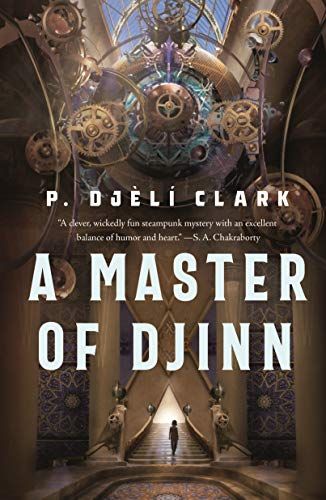
A Master of Djinn by P. Djèlí ClarkThis novel picks up on events and characters from earlier in Clark’s Dead Djinn Universe Series. It’s set in a steampunk, fantasy version of Cairo, where magic has entered the world. There’s a murder mystery, secret societies, and colonial Europe’s creepy fascination with ancient Egyptian mummies. In an alternate universe, England is still on the brink of World War I, and even colonists can see powerful djinn. |
Clockpunk
Clockpunk is set in or evokes an earlier time than steampunk: the 18th century, rather than the 19th. Enlightenment-era clocks were prototypes to computers in some ways. Pierre Jaquet Droz, an 18th century watchmaker, made automata that required advanced programming. The 2006 Doctor Who episode, “The Girl in the Fireplace,” is a TV episode with clockpunk elements. It jumps between a futuristic spaceship and 18th-century Versailles, and creepy clockwork droids are the villains.
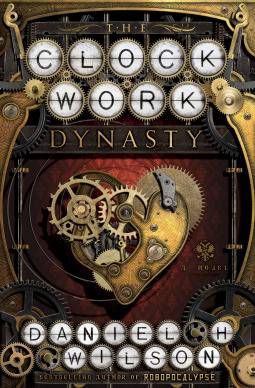
The Clockwork Dynasty by Daniel H. WilsonThis book alternates between 2017 and 18th-century Imperial Russia. June, an anthropologist from our time, rediscovers a lifelike, centuries-old automaton. The author wrote about robots in his previous novel Robopocalypse, and early automata pose a similar threat to humans here. This is fast-paced, and I love the “what-if?” scenario of humans inventing AI centuries ago. |
Oceanpunk
Oceanpunk deals with deep-sea exploration, often with high-tech diving suits or submarines. Twenty Thousand Leagues Under the Sea, Jules Verne’s adventure about the submarine the Nautilus, is the prototype to a lot of oceanpunk today.
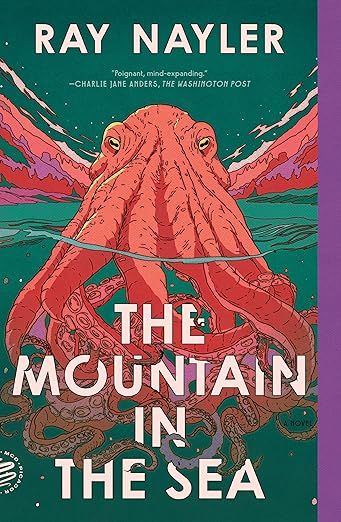
The Mountain in the Sea by Ray NaylerThis novel starts slowly but raises many fascinating ideas. Dr. Nguyen has spent her life studying octopuses and is thrilled to visit their underwater society and learn how they use language. Other characters include an assassin who speaks through a translation filter, hologram romantic partners, robot monks, and a conscious android. In this tech-dominated near future, automated fishing ships abduct and enslave humans, who are cheaper than robots. |
Hopepunk
Science fiction often gets an unwarranted pessimistic reputation, but positive change and cooperation are still possible. There are many terrifying, apocalyptic scenarios in sci-fi, but there’s also plenty of room for optimism and love despite dystopia or climate collapse. So, sci-fi author Alexandra Rowland created the term hopepunk in 2017 for more optimistic imaginings of the future.

This Is How You Lose the Time War by Amal El-Mohtar and Max GladstoneThis Is How You Lose the Time War is a sci-fi epistolary novella. El-Mohtar wrote all the letters by the time agent, code named Blue, while Gladstone wrote Red’s. The characters use lots of witty, literary references and believe they can change the past and future for the better. |
Atompunk
Atompunk uses mid-20th century history, like the development of nuclear weapons and the Cold War, as starting points for speculative, often post-apocalyptic, fiction.
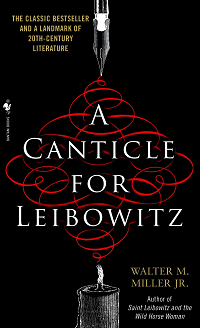
A Canticle for Leibowitz by Walter M. Miller, Jr.In this novel, thousands of years after a nuclear war, the Catholic Church is one of the world’s only remaining educational, news, and societal institutions. This gives the novel a medieval European atmosphere, despite its far-future setting. In an ancient fallout shelter, the protagonist finds everyday artifacts from a 20th-century engineer, but he considers them the relics of a saint. This book was originally published in 1959, and it contains a lot of racist stereotypes of Indigenous peoples from the Americas. This novel is fascinating and helped innovate atompunk, but I also wanted to link this atompunk list with more diverse, recent examples. |
Stonepunk
The term stonepunk refers to the Stone Age. This is a subgenre of speculative and historical fiction imagining prehistoric humans and their development of art and technology. The Ice Age and its predatory animals provide lots of conflict.

The Clan of the Cave Bear by Jean M. AuelThis is another book that many of us have probably read. A homo sapiens (biologically modern human) child named Ayla lives with a group of Neanderthal people. A note: because white, blond Ayla always seems smarter than the dark-skinned Neanderthals, many readers have criticized this series for drawing on outdated, racist theories. Archeological research about prehistoric people has also changed a lot since this book was published in 1980, and recent DNA analysis indicates that prehistoric homo sapiens in what is now Britain had dark skin. For other stonepunk examples, check out Addison Rizer’s list of more recent books with stonepunk elements. |
Silkpunk
In 2015, Ken Liu coined the term silkpunk to describe his own epic fantasy Dandelion Dynasty series. Liu wrote on his website: “ ‘Silkpunk’ is my invention; I use it to describe a technology aesthetic based on a science fictional elaboration of traditions of engineering in East Asia’s classical antiquity.” Unlike steampunk, which uses steam power as an aesthetic, silkpunk is more organic. It uses plants and animals (like chrysanthemums and silkworms) that were important to ancient East Asian art, history, and technology. Also fitting the -punk aesthetic, rebellion is central to the plot.
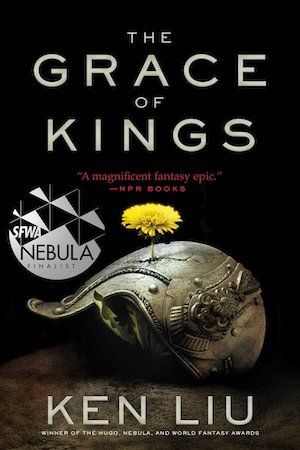
The Grace of Kings by Ken LiuThe Grace of Kings is the first book in the Dandelion Dynasty series. Kuni Garu is a bandit and Mata Zyndu the son of a deposed duke. Together they rebel against tyranny and take down a wicked emperor. But once he is overthrown, Kuni and Mata become rivals, each leading opposing factions pushing different agendas for how the world should be and what justice should look like. |
More to Discover
For another cool scifi subgenre and aesthetic to explore, check out dieselpunk, often inspired by the 1920s through 1940s. A lot of male writers publish in these subgenres, so we spotlighted women writing steampunk back in 2014.

